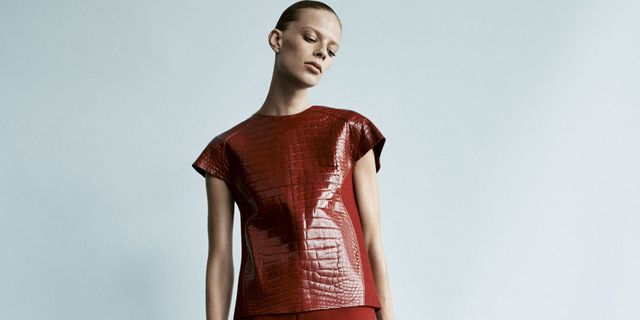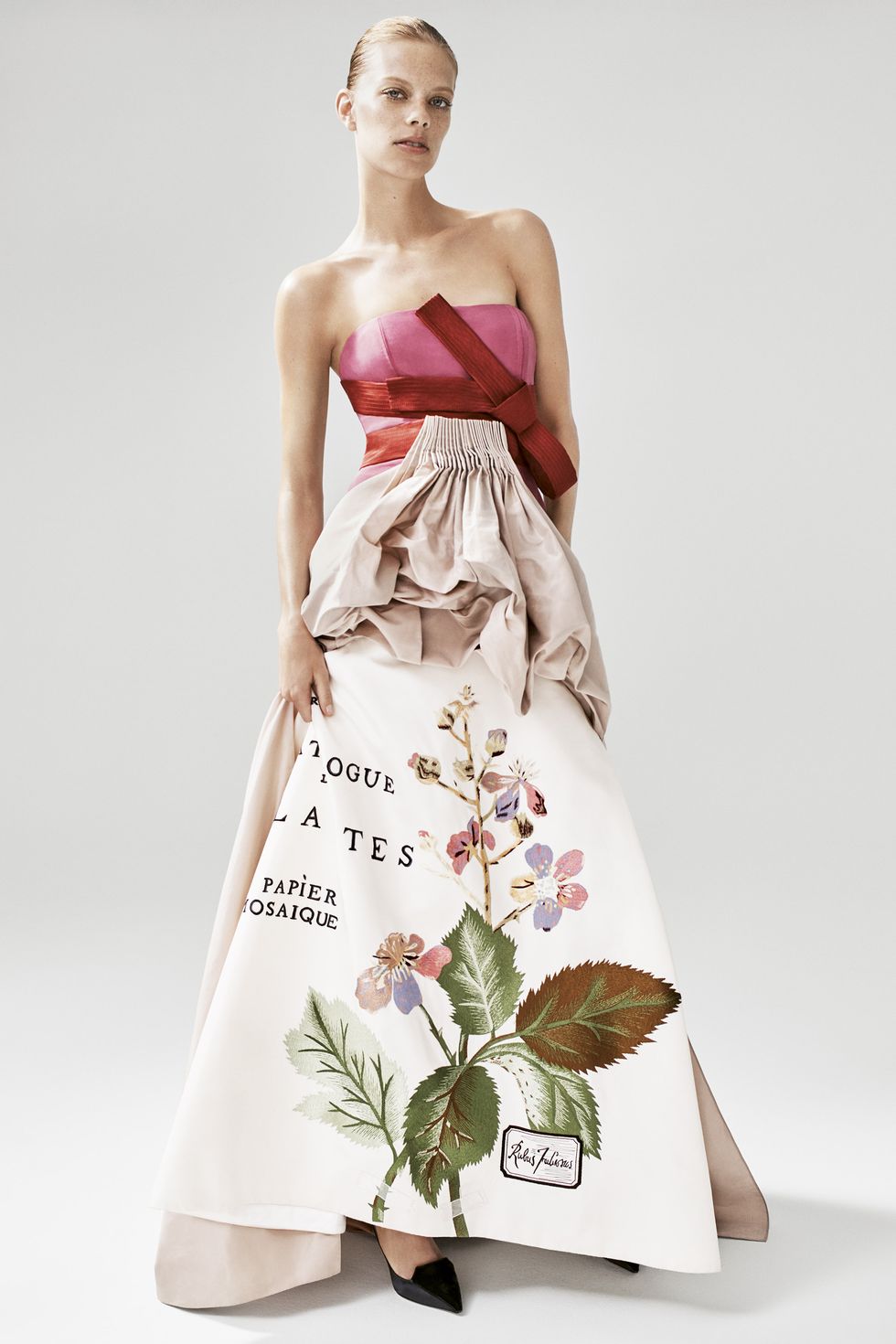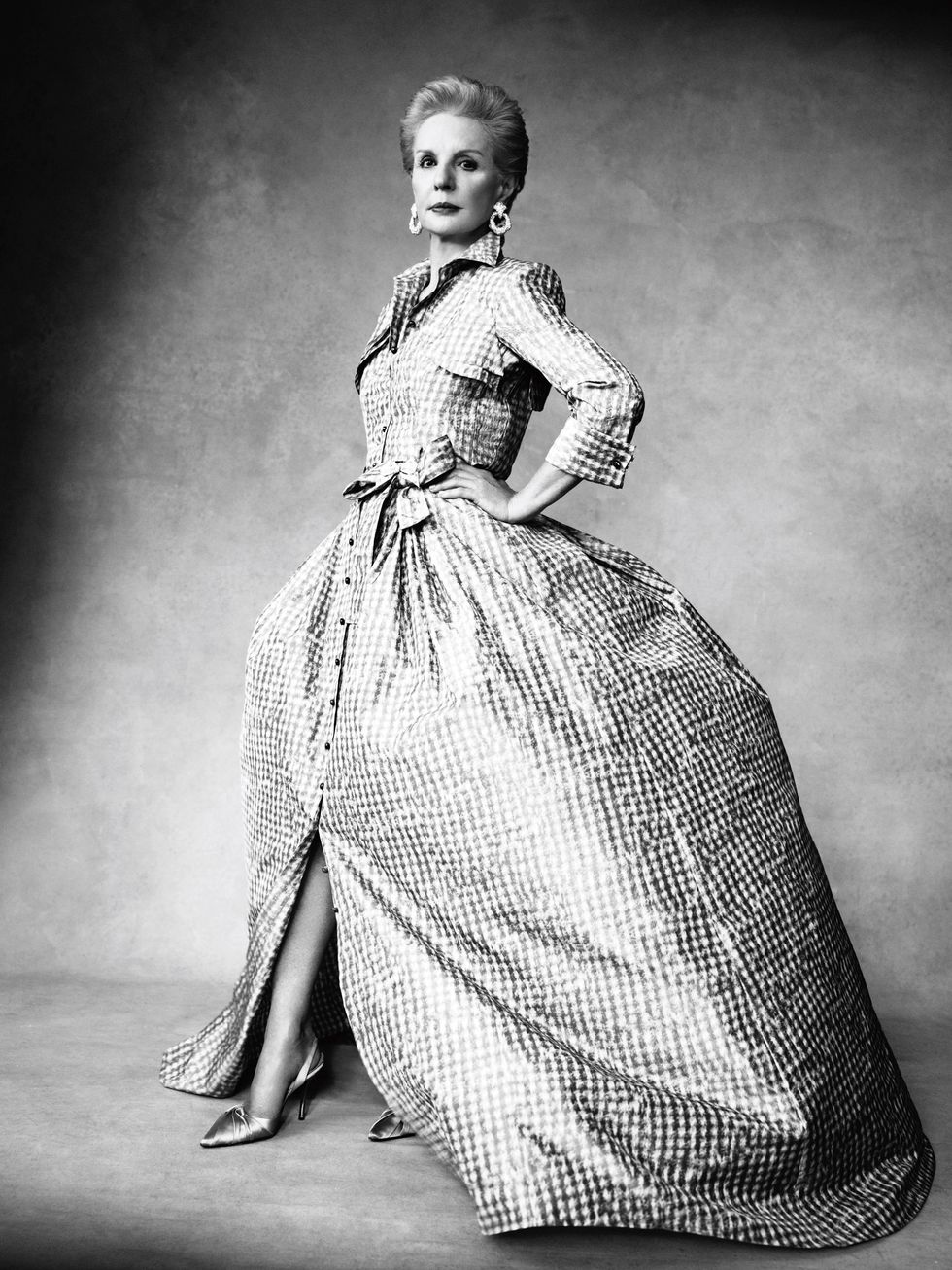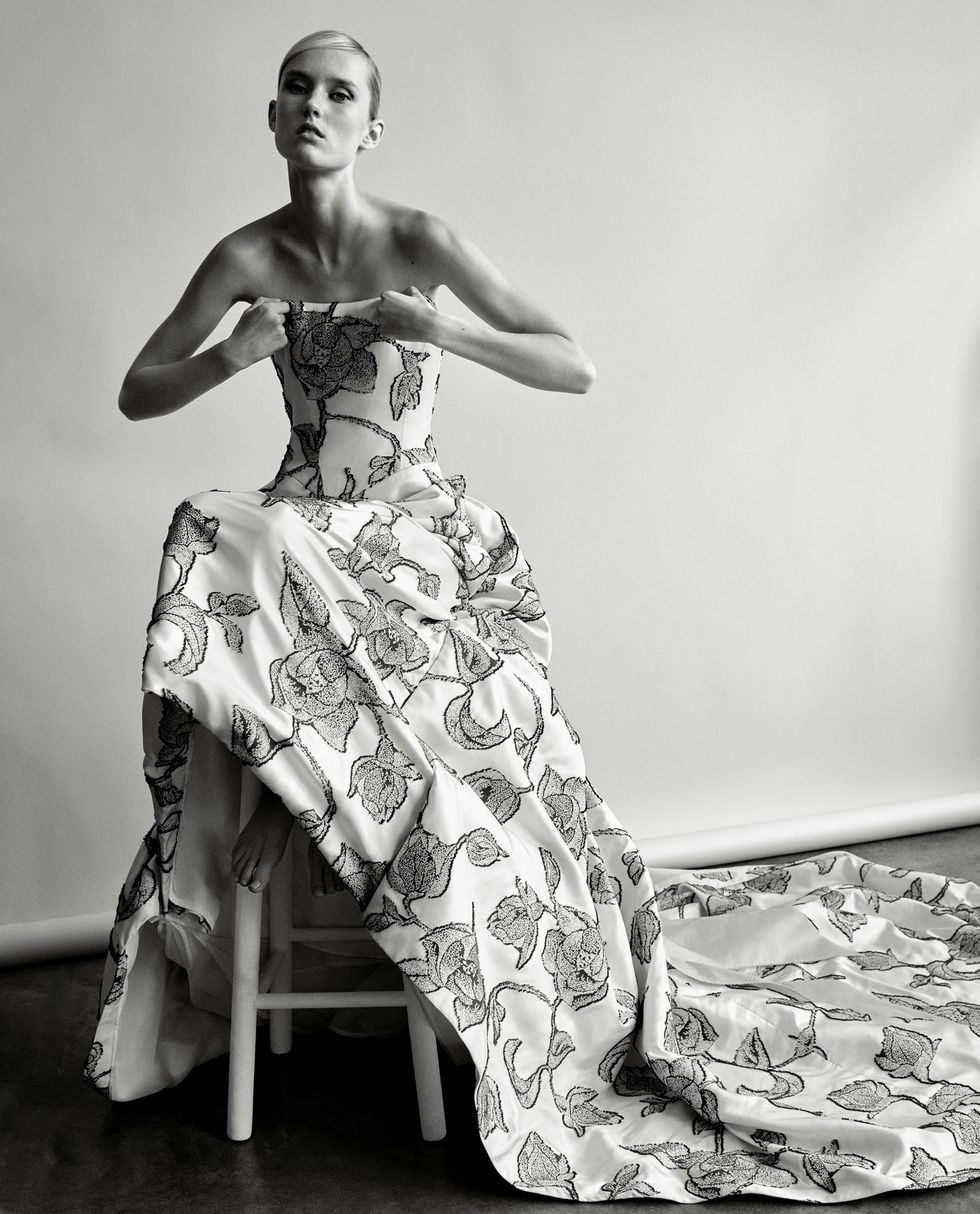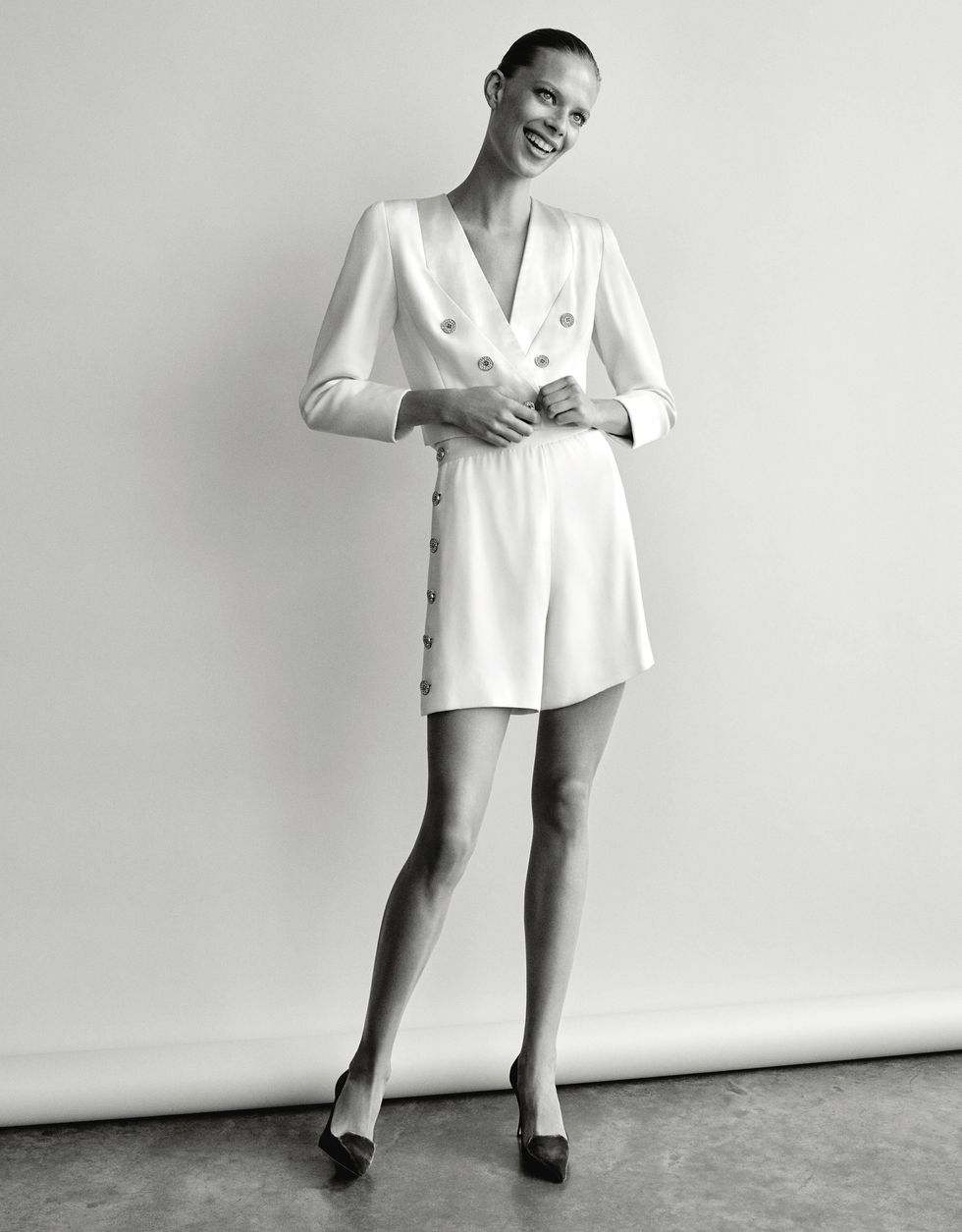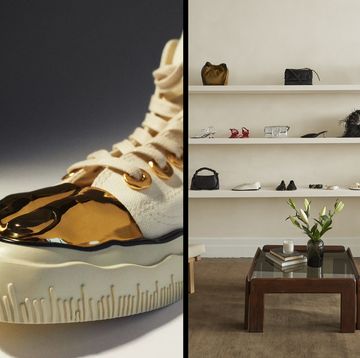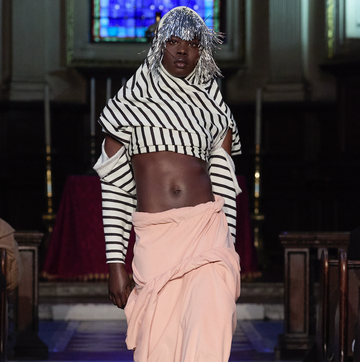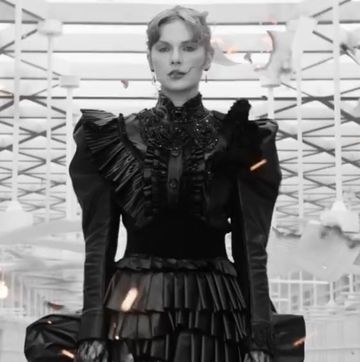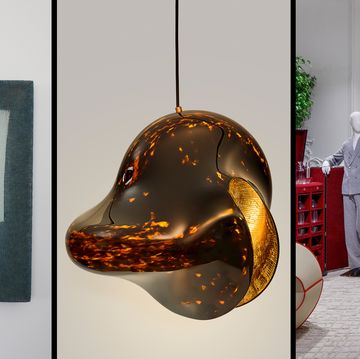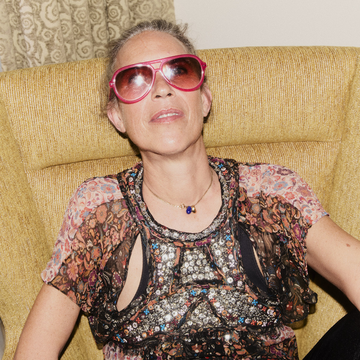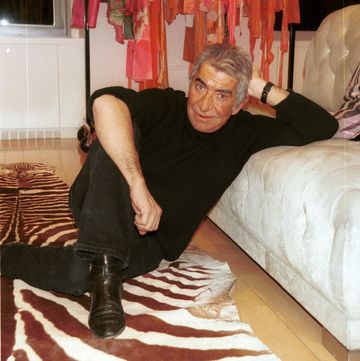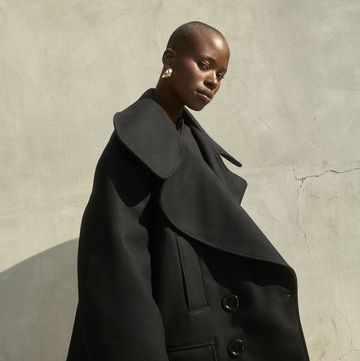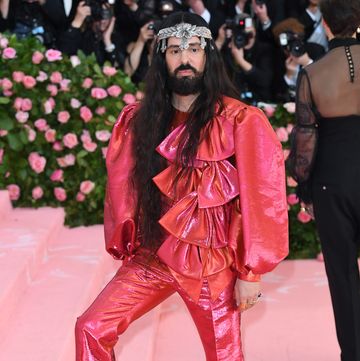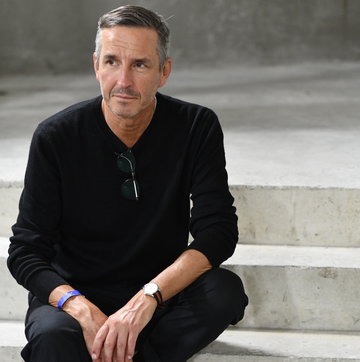Since launching her namesake brand in 1981, Carolina Herrera has dressed first ladies, A-list actresses, and royalty—a testament to her unwavering devotion to all things ladylike. This month marks the publication of her first book, Carolina Herrera: 35 Years in Fashion (Rizzoli), which includes archival photographs from previous decades as well as images of some of the designer's most iconic pieces. Here, Herrera talks to her longtime friend, the actress Renée Zellweger—who famously wore a strapless white taffeta Carolina Herrera gown to receive her Best Supporting Actress statue at the Academy Awards in 2004—about her biggest challenges, her brightest moments, and the power of femininity.
Renée Zellweger: You're an icon. I know you're very humble and you don't want me to say that, but I'm going to say it anyway. You're hardworking, elegant, and unflinchingly glamorous. You may not know, but you're an inspiration to so many women. And you've been at the helm of the Herrera brand for 35 years. That's exceptional.
Carolina Herrera: It has been so good because it has been 35 years that I am doing something that I love. If you do something for so long, it's really great in your life, right?
RZ: Life is short. You have to love what you do. On that note, what are some of your favorite things about having been involved in fashion for all these years?
CH: It's been such a journey; sometimes a very happy one, and sometimes a very difficult one. Fashion is not easy. You have to change your eye to look for beauty all the time. Something I say all the time is, "I'm not in the fashion business; I'm in the beauty business."
RZ: I like that.
CH: In fashion, you have to have perseverance. You have to do it again and again, but it's something that comes out of my heart, and I love it.
RZ: To be able to maintain your position as such an esteemed designer consistently over these decades is quite an accomplishment. What would you attribute that to?
CH: You have to find your own style, and it's difficult to define what style is. It's not what you're wearing; it's how you wear it. It's something very personal, and it reflects the way you live and your house, the books you read, the art you have. It's very important to have a definitive style as a designer. I don't want the collections to look like a potpourri. It has to have a cohesive idea, and it has to be glamorous and beautiful and fit well.
RZ: How has your approach as a designer evolved over the years?
CH: It's like art. The difference between fashion and art is that fashion is art in movement. It has to be worn; otherwise it doesn't exist. I approach it as an evolution. It's always changing. As you know, sometimes it changes in three months. Something you wore three months ago, maybe you don't wear it again. I am a great believer that if something looks very good on you, you can wear it again, and it's not the end of the world. I don't like to follow too many trends because trends tend to make women look like they are wearing uniforms. Even if it doesn't fit the woman, like, let's say a very short skirt, and the woman doesn't have the legs or the height to wear the skirt, but she has to wear it because it's fashionable. Don't do it! If it doesn't look good on you, don't worry about it. Don't become a fashion victim is what I'm trying to say. Just wear what you think looks beautiful.
RZ: I like that you also encourage individualism and that you encourage women to respect themselves as individuals.
CH: Yes, you have to. And you know who helps a lot with that? You do. You are the special one. I remember when we first met at the Jackie Kennedy exhibit at the Metropolitan Museum, and I was one of the chairmen. You were wearing something that I remember very well: an Oleg Cassini short dress.
RZ: Yes! It was an Oleg Cassini gown that Jacqueline Kennedy wore, and it was shortened to be more modern.
CH: And it was beige, right? Off-white?
RZ: Off-white, belted, strapless. Wow, your memory!
CH: It means that you impressed me!
RZ: I've always felt comfortable in your designs because they are classic. The purpose of wearing the dress is usually a really happy occasion that you're meaning to celebrate. It always added to that experience to go and share whatever occasion it was and preparing for it together. You've certainly enriched my experiences in so many ways.
CH: You know, you said before that fashion is a challenge. I think it is good that fashion is a challenge because when something is a challenge, you want to do it better. If you think that you did everything and know everything and that everything has been done perfectly well, then it's time to retire. Life always has a bit of a challenge in front of you, and that's what makes you fight for it. Mistakes in life teach you how to succeed because you want to try again and do it better.
RZ: Were there any major challenges when you first started that you feel really define your career?
CH: It is difficult to read the reviews when you start because you see something in your collection and the press sees something else. That is when you have to be very strong about your own style. They can say whatever they want, but I do what I do because I love it. In anything you do, it's important to have your own personality there.
RZ: That's very good advice for any young person who is embarking on starting a business of any kind, isn't it?
CH: Any business is the same in the beginning because nobody knows where it's going to ride. I had my first show in 1981 at the Metropolitan Club [in New York]. My mentor was Diana Vreeland, who was the one who really directed me and told me I could do it. I admired her so much. I was lucky, but it was a lot of work and energy to put in, and it was not always a very happy time. It's also about teams. When you work in fashion, you need to work as a team. You cannot do anything on your own. If you ask me to sew a button, I don't know how to do it! The idea of the whole collection and how you want to build your brand is all about working with the right people. And luck!
RZ: You mentioned that Diana Vreeland was a mentor to you. Can you share what you took away from your experiences with her?
CH: When I met Diana_ which was years and years ago because she was a very good friend of my mother-in-law and father-in-law and my husband, Reinaldo, I was impressed with her because she was an old lady with a very young mind. I had a great admiration for her, and when I told her I was going to design materials and fabrics, she looked at me straight in the eye and said, "What a boring idea!" So I asked what I should do, and she said, "Why don't you design a collection?" I am here because of Diana and Reinaldo, because they believed in me and pushed me, and when I was down they said, "No, you can do it! Try again!" You need somebody you respect and admire to back you always.
RZ: Is there something about Diana's life that you've hoped to emulate in your own?
CH: I hope I am pleasing her. I try to do this thing according to her taste, more or less. She was a very good editor. Everything was about beauty and making women look beautiful and appealing.
RZ: You mentioned that it was difficult when you were starting in the early '80s, and it made me wonder if your experience as a woman in the business at that time differed dramatically from your experience as the head of the company now. Do you remember if there were differences in how you were received because you were a woman?
CH: I was very lucky in that respect because I had very good friends who were designers, like Bill Blass and Emanuel Ungaro, and they all came to help. The one who was really funny, who was my great friend, was Halston. When I went to tell him that I was going to design a collection, he said, "Oh, darling, are you crazy? Are you sure you want to get involved in this?" But he said that because he loved me, and I loved him. It was not difficult being a woman; it was difficult because I had not done anything like this before. I had to prove to them that I was serious about it. I was lucky because from the first collection it was a great success. The women liked it because it was very glamorous, and I don't know a woman who doesn't want to be glamorous. Maybe not now … The word "elegance" is a bit different now.
RZ: I hope it's not passé.
CH: It's a little passé because everything now has to be a little disheveled or not very well put together. It seems to be old-fashioned, but I think elegance is always going to be there. As Chanel used to say, "Fashion changes but style endures." Glamour is beyond beauty and beyond age. It's like sex appeal. You either have it or you don't, but I don't think it's the end of the world if you don't have it!
RZ: This is one of my favorite qualities about you. If people were to ask me to describe you, "hardworking" is obvious, along with "imaginative" and "clever" and "elegant" and all of those things. But you're really funny! A funny, funny lady.
CH: I think a sense of humor is the most important thing anyone can have. You never forget people who make you laugh. If you date someone who isn't very good-looking but makes you laugh, you will never forget it. It's not all about beauty! It's also about a sense of humor.
RZ: I agree with you. To go back to when you began your business, I imagine that New York was in its glory in fashion and creativity. Was there something about being in New York during that period that inspired you to design clothes?
CH: The '70s were full of creativity. Everybody was so unique. It was a very creative period, and I think to be a designer you have to know a little about art and literature and music because there is inspiration in all of these things. You're looking for beauty but also something that makes sense.
RZ: Let me ask you about now because it seems like it's a very interesting time for women, especially in America. We're in the midst of a social renaissance of some sort. We have a female candidate for president, and our self-awareness and recognition of our value are coming to the fore, and we're questioning social pressures about female stereotypes and body image and aging. What do you hope the Herrera brand communicates to society about women?
CH: I find that it is much easier now for women to be in any position because, as you see, they are presidents of banks, they are prime ministers, they are doctors. Everything is about women. Women have always been around, and now it's about being strong about it. It's a power thing. But you cannot forget about your femininity. You don't have to compete with men in that respect.
RZ: I think we sell ourselves short if we don't embrace that because our femininity is part of our power, isn't it?
CH: Femininity is a lot of power. It's allure. And the moment you start competing directly with a man, it's not that fun.
RZ: It's not as fun, and we are compromising ourselves when we don't embrace every part of ourselves. So with respect to that, what do you hope your clothes will help women express about themselves?
CH: It's what I try to do every day. I want them to choose something that makes them feel empowered and fantastic and admired by many people. But I cannot go and tell them what to wear and what not to wear; you have to decide on your own. That's why I always say you have to have a full-length mirror in your house so you can see what is missing and what you have to add to your look. You can't wait for people to tell you; you have to know yourself. Fashion is magical, a fantasy. It's madness, and it doesn't last. It's changing all the time. There have been a lot of changes [in the fashion industry], of course. You just have to accept it and be strong. You have to have curiosity in life. The moment you don't have any more curiosity, then don't do anything. Retire and stay in your house.
RZ: When you reflect on the past 35 years, what are some of the highlights that make you smile?
CH: It makes me smile when they give me an award. Because it makes me think, "Oh, they thought about me! How charming this is!" And it's a great honor for me. You know something else that I love? You're going to think I'm crazy. I walk in the park every day, and when people come and ask for a photograph, I say, "Oh, my God!" It means they recognize that I have been doing something right and they want to have a photograph taken with me.
RZ: Yeah, to have your contribution acknowledged in that way. Because it's more than just about clothes, isn't it?
CH: Yes, it is a whole life. Sometimes I'm a psychiatrist and I tell people in my office that my door is open, and if they have a problem to come and talk to me. Sometimes I say, "I have to close the door because I don't want to hear it!" [Laughs.] You have to be a psychiatrist too, especially in fashion. A psychologist and a psychiatrist together.
RZ: You've also shaped how we see some of our cultural icons, and you share private insight into the lives of women who have influenced our culture and shaped our history. Queens, first ladies, icons in art …
CH: Can I tell you who is the most important fashion icon in the world? Queen Elizabeth of England. Think about that. She has never put her foot anywhere wrong and always looks fantastic. For me, she is the real fashion icon of the century. And she has a sense of humor.
RZ: Is there anyone else you've met whose work and contributions inspired you, not just as a designer but also as a woman?
CH: Many, but I must say that one of the most exciting moments for our team was when you wore that white dress at the Oscars when you won. It was so exciting.
RZ: It was such an honor to wear something like that. I'm so touched. How do you do that? We're doing an interview about you, and you turn it around.
CH: We're interviewing each other.
RZ: I was asked this question at an interview last week, and I'll tell you my answer after I ask you: "Is there something that might surprise people to know about you?"
CH: Oh, dear, I don't know how to answer that. You know what? It's such a surprise, I won't answer it!
RZ: I answered the exact same. Mystery is more fun.
CH: There is another question they always ask in interviews: "How would you describe yourself?" I always let other people describe me because if I describe myself you will not understand. I love myself so much, I simply cannot describe it.
This article originally appeared in the October 2016 issue of Harper's BAZAAR.
